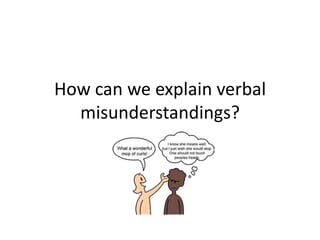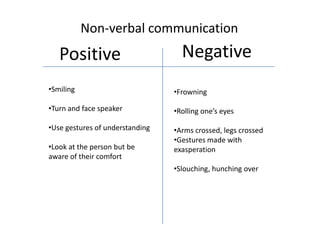This document discusses verbal and non-verbal communication and how misunderstandings can occur. It notes that non-verbal communication like body language, gestures, and facial expressions are an important but often overlooked part of communication. Misunderstandings happen when people do not pay close attention to the verbal and non-verbal signals being sent. Both positive and negative non-verbal cues can influence whether a message is received clearly or leads to confusion and distrust. The conclusion emphasizes that all forms of communication, both verbal and non-verbal, can potentially result in misunderstandings if not properly listened to and understood.






